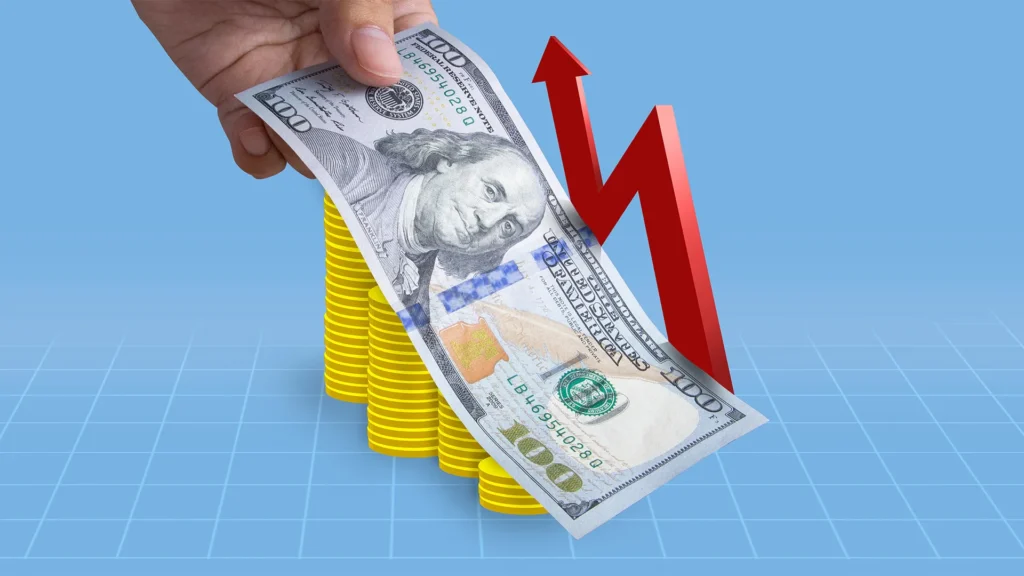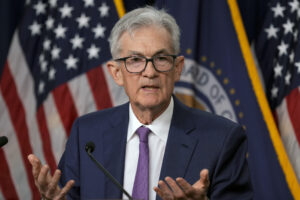Negative shocks are coming one after another, and the US economy is facing a “hard landing”. How should investors respond?

On August 5, stock markets in many countries and regions around the world encountered “Black Monday.” However, on the evening of August 5 and August 6, some markets performed better and rebounded significantly, highlighting the high volatility of global markets. In an interview with a reporter from Brokerage China, several brokers said that the recent sharp decline in the U.S. stock market was caused by a combination of factors. From a micro perspective, the cumulative gains of the “Seven Sisters of U.S. stocks” represented by Nvidia are too large, and it is increasingly difficult for their performance growth to match the continuously rising valuations. The macro rise is due to the fact that many U.S. economic data fell short of expectations, and the market is increasingly worried about a “hard landing” of the U.S. economy. The collapse of the Japanese stock market on Monday became an important trigger for the decline in U.S. stocks. In the medium and long term, as the U.S. economy enters a “hard landing” and consumption power declines sharply, it will impact the sustained and significant decline in U.S. dollar-denominated assets. On the U.S. liability side, such as U.S. bond interest rates, although they have benefited from the decline in short-term interest rates, due to Inflation blunting and term premium expansion may remain at relatively high levels. This will cause the “balance sheet” of U.S. residents, businesses, and especially the government to deteriorate and continue to increase debt repayment pressure, which is not conducive to the U.S. economy getting out of trouble quickly. As the global economy is in turmoil, the U.S. stock market in recent years has been like a rock in the storm, standing firm under the leadership of the “Seven Sisters.” But now the challenges are becoming more and more severe. In the past two months, the Nasdaq index has corrected more than 20%. Negative impacts are also coming. Against the backdrop of continued accumulation of risks, traders appear to be more sensitive to changes in macro data. “The current market has begun to trade on the left side of the ‘hard landing’ of the U.S. economy, which means that the numerator end will be revised down, and the denominator end will also ‘pay for’ the liquidity trap caused by U.S. commercial banks’ reluctance to lend.” Chief Strategy Analysis of China International Finance Securities Shi Zhangchi said in an interview with a reporter from Brokerage China. Zhang Chi believes that from a mid- to long-term perspective, as U.S. economic data rapidly and significantly deviates from the historical center level, especially the rapid deterioration of labor data, it will lead to a rapid decline in consumption power, which in turn will impact U.S. dollar-denominated assets and face continued and significant adjustments. risk. Qin Tai, assistant director of the Huajin Securities Research Institute and chief macro analyst, also said that the recent significant correction in U.S. stocks is mainly due to the rapid cooling of U.S. labor market data in July, which has led to greater market concerns about whether the U.S. economy will quickly fall into recession. Expect disagreements. “In July, the United States added 114,000 new non-farm jobs, which was significantly lower than the 179,000 in June and the monthly average of 168,000 in the second quarter. The overall performance was poor. While the labor participation rate continued to rebound slightly, the unemployment rate accelerated, and the labor force The market is slowing down; the U.S. dollar index has fallen sharply, and the market is beginning to expect a larger rate cut during the year,” Qin Tai said. In terms of microstructure, the deterioration of the trading structure caused by excessive concentration in the U.S. stock market is also one of the triggers. The “Seven Sisters of the U.S. Stock Market” represented by Nvidia once accounted for more than 30% of the market value of the S&P 500 Index. “With such a high degree of concentration, we can see a very obvious rotation of large and small caps in the U.S. stock market, which means that once the performance of some star technology stocks does not meet investors’ expectations, market volatility will So it’s rising rapidly, and that’s what’s happening during this period,” Zhang Chi said. Yan Xiang, chief economist of Huafu Securities, also said frankly: “The main reason for the adjustment of U.S. stocks may be that they have risen too much. The stock prices of leading technology companies represented by the ‘Seven Sisters of U.S. Stocks’ have risen sharply in the past two years. The current S&P 500 of U.S. stocks Index valuation indicators, whether it is the price-to-earnings ratio or the price-to-book ratio, are above the 90th percentile in history, and are overvalued. Many of the transactions here are preemptive for the Fed’s interest rate cut, and wait until the interest rate cut is really approaching. , there may be negative impacts such as the realization of the expected interest rate cut and the expectation of a U.S. economic recession.” Specific to individual stocks, regarding the recent significant correction in the stock prices of leading U.S. technology companies such as Intel, Huang Leping, chief of global technology strategy at Huatai Securities Research Institute, believes that this round is mainly. This is a significant adjustment caused by Intel’s performance being significantly lower than expected and the overall valuation of the semiconductor sector being high. In addition, long-term investors such as Buffett have reduced their holdings in Apple, which has had a certain impact on the confidence of market funds in investing in Apple and industry chain companies. It is worth noting that the reversal of carry trades caused by the rapid appreciation of the yen is also one of the disturbing factors. That is, as the yen appreciates, investors who originally participated in carry trades need to sell their assets and return the yen. Loans and arbitrages are liquidated, thus exacerbating the negative feedback in the market. There is still considerable controversy in the market about the future trend of U.S. stocks, and many analysts are optimistic. Yanxiang said that the U.S. stock market is relatively mature, and it is difficult for general cyclical factors to cause a systemic collapse of the U.S. stock market. Under the “learning effect”, the market knows that the Fed will be easing when the stock market falls. The past few declines of more than 20% in the S&P 500 index were basically caused by unprecedented negative impacts, such as the bursting of the Internet bubble in 2000, the financial crisis in 2008, the outbreak of the epidemic in 2020, and the emergence of major inflation in 2022 that has not been encountered in 40 years. “Now there is no such level of negative impact, and as the Federal Reserve is about to cut interest rates, the possibility of a major U.S. stock market crash is unlikely. However, it will take time to repair U.S. stock valuations due to overestimation, and there may be a wide range of fluctuations in the future. “Yan Xiang said. Chen Aolin, chief metalworking officer of Zheshang Securities, believes that “the Japanese yen carry trade is only a catalyst, not the main cause.” The carry trade is more of a leverage attribute. From the perspective of the internal mechanism, profit expectations are revised downwards, interest rate cuts are expected to heat up, and U.S. and Japanese interest rates Expectations for the spread to narrow are intensifying, the cost of holding positions in carry trades is rising, and the pressure to liquidate positions is spiraling upward. “The resilience of the U.S. economy is expected to exceed expectations, the pace of interest rate cuts is slower than market expectations, the unwinding of carry trades is expected to end early, and U.S. stocks are expected to show a V-shaped trend.” Chen Olin said. However, there are some different views. “From a medium-term perspective, my view on U.S. stocks is relatively bearish. I am still more inclined to judge that this U.S. economic cycle will still move towards a ‘hard landing.'” Zhang Chi said in the interview that currently, the United States is receiving relief benefits for the first time. The number of people has reached 249,000, and the unemployment rate has reached the 4.2% to 4.4% threshold. It is expected that Sam’s Law will approach the 0.5% recession zone with a high probability. However, the current mainstream consensus in the market may still be trading around the narrative of a “soft landing”, in which there is a relatively large gap in expectations. This means that once the U.S. economy further accelerates and slows down in the future, there will still be a certain degree of uncertainty in the market. Downside. At the same time, a review of the experience of previous interest rate cut cycles will reveal that when the Federal Reserve starts to cut interest rates for the first time, a “liquidity trap” phenomenon often occurs, and indicators indicating the tightness and tightness of offshore U.S. dollar liquidity surge. If it is a “hard landing” situation , equity assets will undergo relatively obvious adjustments. “As the U.S. economy enters a ‘hard landing’, consumption power declines sharply, which will impact the continued and significant decline of U.S. dollar-denominated assets. While the U.S. liability side, such as U.S. bond interest rates, although benefiting from the decline in short-term interest rates, will suffer due to the blunting of inflation and The expansion of the term premium may remain at a relatively high level. This will cause the “balance sheet” of U.S. residents, companies, and especially the government to deteriorate, continue to increase their debt repayment pressure, and is not conducive to the U.S. economy getting out of trouble quickly. “Zhang Chi said. Zhang Jiqiang, chief fixed income officer of Huatai Securities, also believes that over the past year or so, transactions centered on the three consensuses of “US soft landing + AI technological revolution + Japanese yen weakness” have been continuously strengthened and linearly extrapolated, accumulating a large number of positions. Once a disturbance occurs, positions begin to reverse and the market is prone to large fluctuations. “In the short term, there is the possibility of recurrence, whether recession trades or carry trade reversals.” Zhang Jiqiang said, suggesting that on the one hand, he should pay more attention to safe-haven assets, and on the other hand, he should pay more attention to macro data, central bank attitudes, and the United States. The sensitivity of key variables such as the general election and NVIDIA financial reports. In the medium to long term, these three consensuses may not have fully reversed yet, but uncertainty has obviously increased. “At the current stage, the market volatility has been significantly amplified, and it is recommended that investors mainly avoid risks.” Zhang Chi said that the current market volatility has increased sharply. Obviously, for allocating funds, moments of high volatility are not a good time to intervene. point, it is recommended to switch from offense to defense. For example, gold and innovative drugs benefit from falling U.S. bond interest rates.





